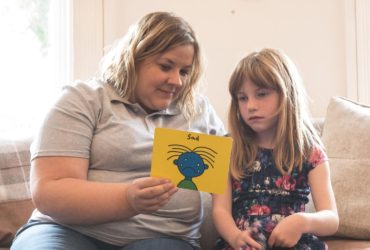Death can be a difficult concept for children to understand, especially young children, and it can be equally difficult to know how to begin to explain it. We find it’s best to be honest, explain what has happened in a clear way and let them know they can ask questions and talk about their feelings. For young children, using examples from nature can be a good way to explain death.
Keep it clear
Children understand death differently at each age and stage of development, for example young children often don’t understand the finality of death and take terms like ‘lost’ or ‘gone to sleep’ very literally. So, use clear language like ‘died’ or ‘dead’ and be open and honest with them. This is an example of a clear way to explain death to a child:
“When someone dies, their body has stopped working and they can’t be brought back to life. They are no longer able to do the things they could when they were alive, such as move or talk. When someone dies, their heart stops beating, they stop breathing, their brain stops thinking.”
Let them know you’re there for them
Children may ask lots of questions and ask the same question over and over. This doesn’t mean you haven’t explained things well, this is just how children learn and process information. Let them know they can ask questions and try to answer them as honestly as you can. If you don’t know the answer, tell them you will find out and get back to them. It is also okay to say you don’t know – some questions remain unanswered after a death.
Reassure the child that they are safe and loved, and that they will be taken care of. Let them know that it’s okay to feel sad when thinking about death, but that you that you are there for them if they need to talk to someone.
Continued below…
Use nature to explain death to a young child
Explaining death to a young child can be easier if you first help them understand the idea of ‘living’ and ‘alive’. Identifying the differences between living and dead is easier if you find examples in nature to show children. Start by spotting living things together and talk about what they see – are there particular movements or noises? You can explain that these are signs of being alive.
Encourage the child to think about other things that happen when you are alive, such as a heart that is beating and a brain that is thinking. This can help them make connections to humans. Ask the child to think about what else shows that we are alive – perhaps the way we move or do things.
Now, find dead insects and ask a child to see what they aren’t doing compared to the living ones. This can help them understand the different between alive and dead. You can then explain that their heart is no longer beating, and their brain is no longer working, and these things mean that they are dead and cannot come back. This helps them understand that the creature is not asleep.
It’s important for children to understand the life cycle and that everyone will change from being alive to being dead at some point, but that most people die when they are older. Some children can worry that something they did or said has caused a death. So, explaining to a child that our thoughts or words won’t cause somebody to die can help.
Getting professional grief support
If you are supporting a child or young person who is struggling with their grief, please call our Freephone Helpline team on 08088 020 021 (8am -8pm, weekdays) or email ask@winstonswish.org. We are here to help and can provide advice, support, and resources. Winston’s Wish provides support for children, young people up to the age of 25 and adults supporting them.
You may also like

Activities for grieving children
Download our free activities to help grieving children express their feelings and remember someone who has died.

Information and advice
Advice and resources to support children and young people, including on bereavement by suicide, homicide and serious illness.


